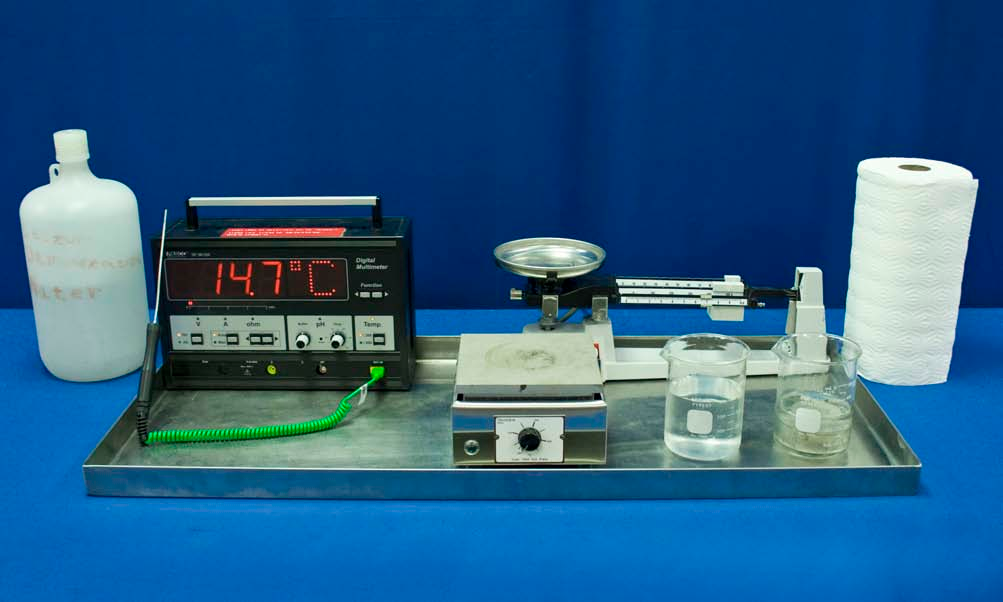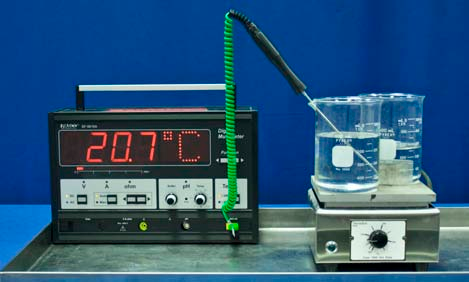


Concept
The thermal energy, $Q$, transferred from one sample to another is given by $Q = mc \Delta T$ where $m$ is the mass, $c$ the specific heat, and $\Delta T$ the temperature change. At 15°C, the specific heat of water (4186 J/ kg ⋅ °C) is almost five times the specific heat of aluminum (900 J/ kg ⋅ °C). Thus, for equal masses of water and aluminum, and the same amount of heat energy transferred to each sample, the sample of aluminum will experience the greater temperature change.
Procedure
- Verify that one Pyrex beaker contains 400 g of water while the other contains 200 g of water and 200 g of aluminum.
- Weigh each beaker to show that the contents have the same total mass.
- Measure the temperature of the water in each beaker to show that they have the same starting temperature.
- Place both beakers diagonally on the hot plate so that the bottom of each beaker is fully touching the hot plate.
- Turn the hot plate dial to about 75°C.
- After about 5 minutes, measure the water temperature in each beaker showing that the beaker with water and aluminum is hotter than the beaker with water only.
Equipment
- Jug of Water
- Paper Towels
- Metal Tray
- Digital Multimeter with Thermometer
- Hot Plate
- Balance Scale
- (2) 600 mL Pyrex Beaker
- 200 g Aluminum Cylinder